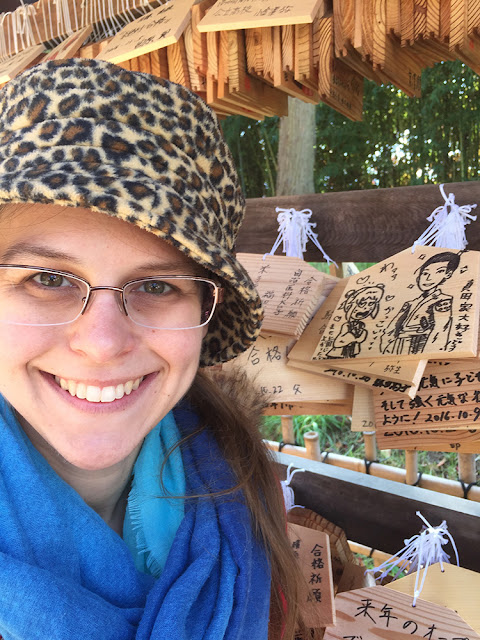This appeared last week:
Some GPs aren�t sure whether new digital technology is going to live up to the hype. Apparently they�re not alone.
UK health think-tank Nuffield Trust recently looked at the evidence for seven types of digital technology for primary care patients to work out whether the world is headed towards �a digital utopia� or �dystopian distraction�.
They examined the research for wearable technology, online triage, online health information, online appointment booking, telehealth, e-records and apps.
They concluded that there�s not enough evidence to show that patient technology actually improves health outcomes. There�s some evidence that some technology boosts patient engagement and their experience. But that�s about it.
For example, regarding telehealth, the trust�s report says: �Remote consultations have variously been found to increase workload, increase workload temporarily and decrease workload�. It�s hardly scientific consensus.
The evidence for online triage is �mixed�, with limited evidence suggesting that it reduces demand by keeping patients away from inappropriate healthcare channels.
Similarly, the evidence for online bookings is �inconclusive�. Some GPs might think online bookings would enable practices to run more efficiently, but the report says there�s �no concrete evidence� for this.
More here:
Here is a link to the report:
More information:
The Executive Summary provides some more detail.
Key points
Digital technology is transforming our lives, but its use in the NHS is still limited. There is a growing gap between the digital experience we have as consumers and as patients in the NHS. This gap is all the more pronounced given the rapid growth of commercially available health-related products � there are over 165,000 health apps on the market.
In the future, digital tools could transform our experience of care and facilitate improved self-management. It is hoped that this enhanced capacity for self-care will reduce demand on stretched services. But the impact of this new digital capability is far from certain; we are lacking evidence in a wide range of areas. Not only this, but NHS professionals could shy away from patient technology for fear of an increased workload or patients receiving inaccurate advice. Or a host of new private providers offering advanced digital services could disrupt the primary care landscape and threaten joined-up care.
Despite this significant uncertainty, health care organisations and policy-makers will need to make decisions based on the best available evidence. This report explores that evidence. We looked at seven types of patient-facing technologies, collating what the evidence tells us to date with experiences of those using the technology on the front line. From this we suggest lessons for success. Our key findings for each area are as follows.
Monitoring and wearable technology. We found some evidence that monitoring can improve people�s diet, exercise and medication adherence, but sustained engagement can prove challenging and not all of the studies were positive in their findings. Virtually all of the evidence comes from the use of monitoring equipment that has been professionally recommended, which is known to increase adherence and engagement. Professional monitoring interventions for chronic conditions, whereby data is sent to the health care team, have had very positive results on health outcomes and resource use.
Online triage. Support for self-triage (such as service directories and interactive symptom checkers) and professionally led online triage (using emails or web consults) have the potential to reduce demand, although evidence of this is weak to date. At present, interactive symptom checkers are risk averse and may drive unnecessary demand to the health care system. These are already used at scale, and advancements in artificial intelligence among other things mean there are opportunities to make them much more accurate. But there are concerns that the use of these tools removes the opportunity for holistic clinical assessment and people do not always follow advice � particularly when self-management has been advised. We need more research on how patients engage with these tools alongside rigorous testing and evaluation of the technology itself.
Online sources of health information, targeted interventions and peer support. Online information can help patients manage their condition and have more productive conversations with their health care team. Where patients belong to a patient network, they often feel better socially supported and have improved behavioural and clinical outcomes. If there are also positive results from targeted web-based interventions, particularly for mental and sexual health, but they must be effectively targeted to the appropriate audience to be successful.
Online appointment booking and other transactional services. Booking appointments and ordering repeat prescriptions online can improve patient experience. Many assume online booking will also result in administrative efficiencies, but there is little evidence of this to date; in most places uptake is too low to have any discernible impact.
Remote consultations. Evidence suggests email consultations improve communication with professionals, save patients time and increase overall satisfaction. Video consultations are also generally well received by those that use them, but they tend to appeal to those who struggle to access their health care team in person. This may change if video consultations are offered on demand or when a face-to-face option is not possible (for example out of hours). There is mixed evidence on their impact on demand � with various results showing they increase workload permanently or temporarily, or decrease workload. Much depends on the context and the type of patient. Focusing on those most likely to benefit, such as patients with access difficulties, may help.
Online access to records. This is one of the most effective ways to engage patients, often leading to improved communication, adherence to lifestyle advice and shared decision-making. It also tends to be highly valued by patients. Evidence about the impact on demand is generally inconclusive, but it has the potential to increase GP visits, telephone encounters, A&E visits and hospitalisations and we do not have robust evidence on its impact on health outcomes. There are also a number of governance concerns around granting record access to vulnerable patients and the potential for others to exploit their data. If full record access is granted, some worry about the extent to which third-party information is shared. There are several strategies to mitigate against these risks, including restricting access or redacting records where necessary. But this takes considerable resource and a new business model is required.
Apps. There is a wide variety of apps on the market available for all of the functions set out above. But there are also a number of apps to help patients manage their condition or stay well. There is an emerging body of evidence suggesting that apps can have a positive impact on diet monitoring; physical activity; adherence to medication and chronic condition management, particularly for multiple sclerosis, Parkinson�s disease and cardiovascular disease. Apps that use �gamification� and established behaviour-change techniques such as prompting goal setting, review and feedback on performance to encourage engagement may prove increasingly important in helping to sustain behaviour change. But many apps are inaccurate and the efficacy of the majority of them is unknown. We need more robust evidence on what works and in which contexts.
So, there are a range of positive impacts to date. But the uptake of digital services offered by the NHS is low and the health system is not currently making the most of beneficial consumer devices or apps:
� Increased uptake will require significant changes in the ways professionals work: they will need new skills and expertise.
� If patients are to self-manage using apps or wearable devices, the largest gains are likely to come from professionals recommending innovations, using the data for diagnostic and treatment decisions where appropriate and actively encouraging sustained engagement with support from others in community or general practice settings.
� Benefits from online access to records are likely to be maximised by professionals moving to a model of shared decision-making and showing patients how the information in the record can support self-care. Even online appointment booking is likely to be improved by demonstrations of how it works and what the benefits are in order to improve uptake, which has been slow to develop.
� Uptake is also likely to improve with technology that is intuitive and easy to use for everyone � including those with low literacy levels and cognitive impairments. This should be part of broader efforts to reduce the risk of digital exclusion. Of course, traditional channels should also remain available.
� All of this requires resources and it is a mistake to think that the use of patient- facing technology to support healthier lifestyles and self-care will be an easy or free option. It will require funding and support at all levels of the system, at least in the short term. We make a number of recommendations about where this might be most helpful.
� This agenda needs to be considered in light of an entire health system. The potential for transformational change comes from patients using digital tools on every step of their health journey. Sustainability and Transformation Plans alongside Local Digital Roadmaps present a valuable opportunity to take a place-based approach to promoting the uptake of digital tools, rather than focusing on particular sectors or services.
� Finally, there is still so much we do not know about how this will play out. As uptake and awareness increases, it will be important to have local and national evaluations, which help to highlight best practice and avoid common pitfalls.
A concluding summary says it all:
A summary
Perhaps the most positive evidence to date on health-related digital technology comes from the impact it has on patient engagement and patient experience. In both cases, online access to records plays a fundamental role, simultaneously supporting self-management and improving convenience. However, concerns remain about ensuring patient privacy, developing a business model to support the additional time and resource that granting record access requires and the potential to inflate demand. Online patient networks have also had very positive results and can result in improved behavioural and clinical outcomes.
There is emerging evidence that apps are increasingly encouraging patient engagement with diet, exercise, medication adherence and chronic disease management. However, we need more evidence on the quality and efficacy of the majority of apps. In addition, some evidence suggests that monitoring devices can improve physical activity and diet � but most of this comes from short, professional interventions. This is an area that needs further research.
The overall impact of health-related digital technology on demand and health outcomes is not clear. In terms of demand, while there are some quick wins � such as improving appointment attendance through text-message reminders � there is also the potential to increase demand via remote consultations, risk-averse triage and access to records. We need a better understanding of how demand is affected and why. And we still do not know how the majority of these tools impact on health outcomes.
But new (and not so new) technologies can support patients along the entire patient pathway � transforming how they stay well, find the care they need, interact with the health care system and manage a condition (see �Technology and the health care journey� graphic on p. 2). And apps are increasingly the vehicle that brings these new capabilities together, providing neatly packaged, user-friendly solutions to patients and consumers through the touch of a button. Patients now have a whole suite of new ways to manage their health and health care in their pocket, via their smartphone.
This has to be a good thing. The challenge for the NHS is making the best use of digital services for those who stand to benefit the most.
-----
All in all this is a useful report which shows just how vague the evidence is for the value of many digital health initiatives.
Care with the public purse is definitely warranted!
David.










